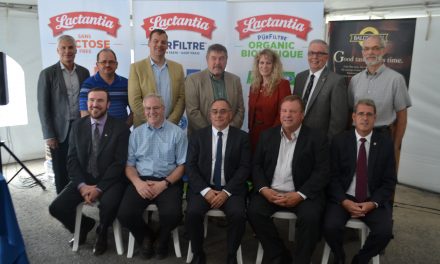By Ashley Knapton
AgriNews Contributor
It has been hard to not get overly excited about the extra daylight we’ve been getting each day – spring is just around the corner.
We have a few weeks remaining before things truly enter “full tilt” mode and get springtime busy. That means we have just a few weeks left to do some planning for our year ahead in the world of hay – what do we need for our farm to make sure we have enough high-quality feed to get us through another winter.
The first thing we should likely think about is what we aim to plant in terms of our hay. We need to determine what mix of grasses and legumes we are intending to grow and what the ideal seeding rate is, for this mixture. When evaluating ideal seeding rate, it is important to consider not just the mix that you are putting in the ground, but the mix that you’d like to see at harvest time. If you are aiming for a feed that is predominately grasses, we should consider the yield that grasses will have at time of harvest, not just the proportion in the mix.
Speaking of harvest time, when we are selecting our mixture, it is important to pick something that will maintain its quality to harvest – whether that means matching the various species in the mixture to ensure they mature at similar times or ensuring that the field as a whole will have a wide harvest window to ensure the quality is maintained until you are able to harvest.
A challenge we see in many annual forages used in emergency situations is a narrow window for which the harvest timing is ideal. Quality is quickly lost and if the weather is adverse right around the time we hope to cut, we could end up with poor quality feed pretty quickly. We also have to consider these implications for not just first cut, but subsequent cuts afterwards. Timothy, for example, is an excellent companion for alfalfa on first cut, but its slower summer growth means second, and third cuts will have a higher ratio of alfalfa in your final mix.
Before we jump straight into planting, we should count on taking some time to check on our established fields. Eastern Ontario has been challenged with winterkill through the region the last few years, so this is something that will be top of mind for many producers. In the early spring, we can do a preliminary evaluation of the survival of field of alfalfa for example, by counting the number of surviving plants per foot squared. For fields that are in their second year of production, we will ideally see 15-20 alfalfa plants/ft2. For fields that are three plus years established, we can see as few as five alfalfa plants and still maintain acceptable production, though we can likely subscribe to the mentality “the more the merrier.” While this will not give a definitive idea of yield potential, it will be an early indicator of the viability of a field for the upcoming year.
When counting plants, it is a good idea to dig a few up and evaluate the health of their root systems. A healthy root will be bright white and firm in density, while an unhealthy root will start to show brown discolouration at the top of the root, known as the crown, as well as softening in the centre of the root. This browning can be an indicator of winter injury, which in turn can relate to the plant’s ability to yield and remain resilient for the upcoming year.
The act of planting hay is not just a single action or decision, but rather a collection of many decisions, followed by many little actions. It is easy to become overwhelmed in the heat of the spring with all these little “to-dos”, so it is in our best interest now to take the time we have to research our forage options and select not just the best one for our farm today, but the best one for our farm in a year of high winterkill or in a year of tight inventories. Let’s lay out our plan A, B and C now so we can hit the ground running…when it’s fit!











